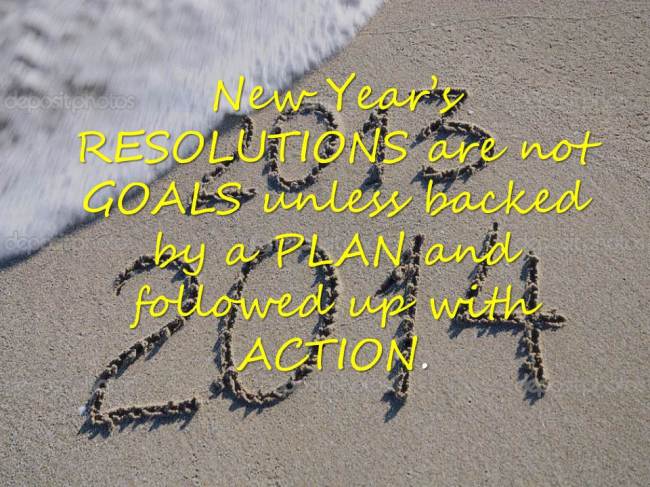It’s that time again, time to think about your New Year’s Resolution. You know, that “thing” you resolve to do on January 1 and have forgotten about by Valentine’s Day. Lose weight, work out more, spend more time with family…all these are noble goals. But are they really goals or merely non-binding suggestions for how we would like to live the next 365 days?
Resolutions, in and of themselves, are useless. When we consider that only 8% of Americans achieve their New Year’s goals they seem more like the non-binding resolutions. They’re statements about the condition of our lives and what we would like to do about it. Like the ones issued by Congress they don’t come with a plan to implement and accomplish them. They sound good but we don’t have to do anything. Our resolutions are not goals because they are not backed up by a plan and require no action.
So how do we create New Year’s Resolutions that are real, achievable goals?
The SMART method for goal setting is an easy way to outline your goals for the next year or whatever time frame you choose. It works like this:
1.) Specific. Goals must specify what you want to achieve. “I want to lose weight” is a good idea but it isn’t specific enough. How much weight do you want to lose? “I want to lose 45 pounds” is specific. Perhaps you want to fit into that dress or suit that you can no longer wear. Stating “I want to wear a Size 10 dress” or “I want to get back to a 36-inch waist” are specific and give you a target to shoot for.
2.) Measurable. How will you measure your progress? If your goal is to run a marathon but you aren’t recording your distance and time how will you know what you need to do to meet that goal? For weight loss are you recording what you eat, weighing yourself regularly or trying on that dress? The heart of science is measurement and the science of goal setting is no different. Remember that what gets measured gets done.
3.) Achievable. “Anything the mind can conceive and believe it can achieve”. Bull. You may believe you can fly but jumping off a building will prove otherwise. Your goal has to be something realistic. I love football but a goal of playing in the NFL isn’t realistic. It will never happen and I’m okay with that. That’s why being a professional football player isn’t on my goal sheet. Winning the lottery isn’t on there, either, because it’s completely outside my control. Ensure that your goal is something that you can achieve.
4.) Realistic. A goal must be something that you are able and willing to work for and it must lie outside your comfort zone. A goal that is too easily achieved isn’t realistic because it didn’t require much motivation or effort. “I want to lose 50 pounds” will require much more motivation than “I want to lose 2 pounds”. Stretch goals, as long as they are achievable, are realistic because they require you to develop new skills and ability to reach them.
5.) Timely. What’s your deadline for accomplishment? Vote yourself off “Someday Isle”. Doesn’t “I want to lose 50 pounds by the 4th of July” sound better than “I want to lose weight in 2014”? “I want to run in the Boston Marathon” is also timely since the race has a set date but what about qualifying races? Make sure that you set benchmarks along the way to ensure that you’re making progress. It’s also easier (and more encouraging) to get the small victories on the way to the big one.
A couple of tips for New Year’s Resolutions:
1. ) Keep them simple. A long list of goals may seem impressive at first but it will quickly become more intimidating than a short one. Competing priorities (as if we don’t have enough of those already) will quickly overwhelm all but the most determined goalsetter.
2. ) Go public. Goals are easier to accomplish when others know what you’re up to. Just the fear of what friends and family will think if you fail can be enough to energize your efforts. Ironically, the fear of what others may think keeps us from making our goals known and may put a damper on our motivation. If you can’t expect a lot of support, or expect outright opposition, then more privacy may be an option. Do what’s right for you.
3.) Put them on paper. You need to read your goals at least twice per day to keep them fresh in your mind and to review your progress. It also helps you visualize your goals. If they’re not in writing, how are you supposed to do this? If you’re trusting your memory you’ll sabotage your progress and shortchange yourself.
Remember, you create goals with the desire to improve in some area: health, fitness, finances, education, or whatever else inspires you. Take December to plan so that you’ll be ready to go on January 1st. You owe it to yourself to make 2014 the best year ever so be SMART about your GOALS, create a PLAN for achieving them, and follow it up with ACTION!

Leave a comment